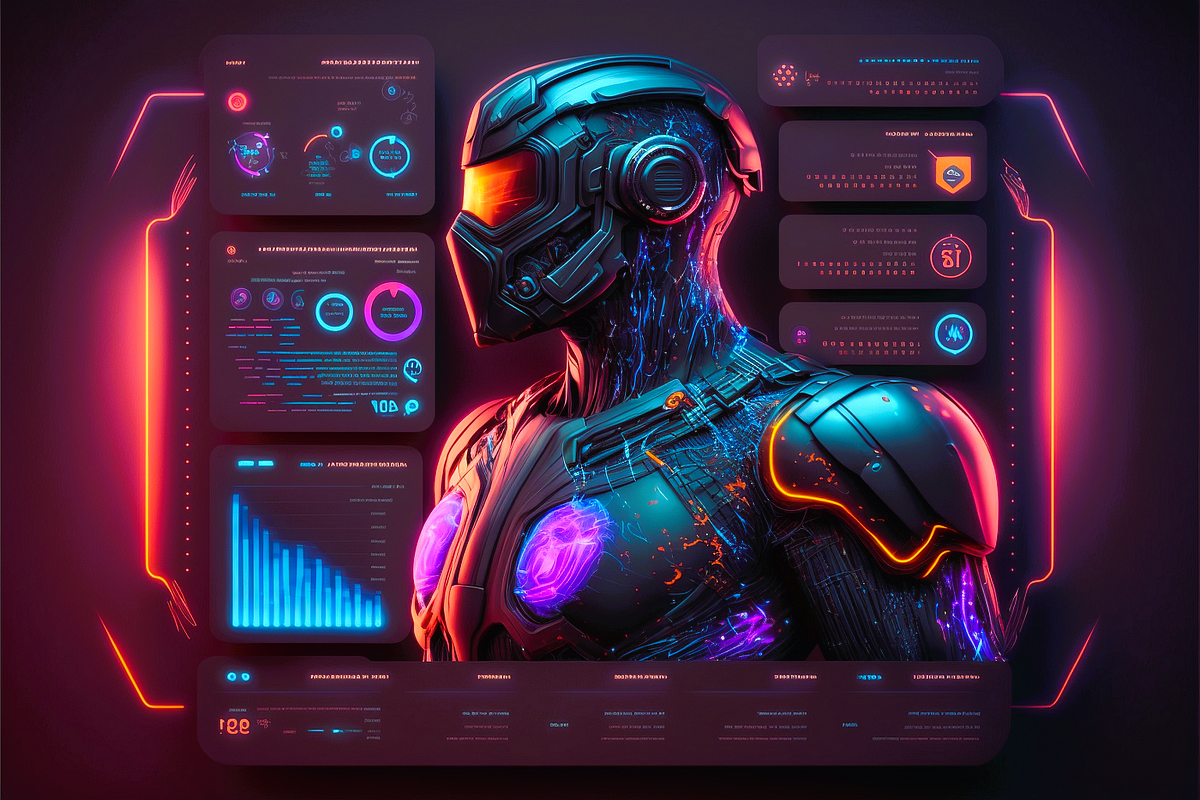The realm of game UI (user interface) design is rapidly evolving, driven by technological advancements and changing player expectations. As we look towards the future, several emerging trends and technologies are poised to reshape the landscape of game UI design. This article explores these trends and technologies, offering insights into how they will influence the development of game interfaces and enhance the overall gaming experience.
1. Immersive Interfaces with Augmented Reality (AR) and Virtual Reality (VR)
As AR and VR technologies continue to advance, they are significantly impacting game UI design. Immersive interfaces are becoming increasingly popular, providing players with a more engaging and interactive experience.
Key Developments:
- AR Overlays: Augmented reality games, such as Pokémon GO, use AR overlays to integrate game elements into the real world. Future AR UIs are expected to become more sophisticated, offering dynamic interactions and contextual information based on the player’s environment.
- VR Interfaces: Virtual reality games require immersive UIs that blend seamlessly with the virtual environment. Games like Half-Life: Alyx demonstrate the potential of VR UIs, where interfaces are designed to be interacted with naturally within the VR space.
Impact on Game UI Design:
- Spatial Interaction: AR and VR technologies enable spatial interaction, where UI elements are positioned within a 3D space. This requires designers to rethink traditional 2D interfaces and create intuitive, spatially-aware elements.
- Enhanced Immersion: By integrating UI elements into the game world, AR and VR interfaces enhance immersion and provide a more engaging experience for players.
2. AI-Driven UI Personalization

Artificial intelligence (AI) is set to revolutionize game UI design by offering personalized experiences tailored to individual players. AI-driven UI personalization can adapt to player preferences, behaviors, and skill levels, creating a more customized and enjoyable gaming experience.
Key Developments:
- Dynamic Content Adjustment: AI algorithms can analyze player behavior and adjust UI elements dynamically. For example, in-game tutorials and help systems can be tailored based on the player’s progress and challenges.
- Predictive UI: AI can predict player needs and preferences, offering contextual tips, recommendations, and shortcuts based on gameplay patterns.
Impact on Game UI Design:
- Personalized Experiences: AI-driven UI personalization enhances player engagement by providing interfaces that adapt to individual preferences and play styles.
- Improved Accessibility: Personalized UIs can improve accessibility by adjusting elements to accommodate different player needs, such as providing larger text or simplified controls.
3. Minimalist and Streamlined Designs
The trend towards minimalist and streamlined designs continues to gain traction in game UI design. This approach focuses on simplicity, clarity, and efficiency, reducing visual clutter and enhancing the player’s focus on gameplay. Like this article? Read also about Art Style on Game UI Design.
Key Developments:
- Clean Interfaces: Minimalist UIs prioritize essential elements and eliminate unnecessary distractions. Games like Celeste and Journey use clean interfaces to enhance the overall experience and allow players to immerse themselves fully in the game.
- Intuitive Controls: Streamlined designs emphasize intuitive controls and navigation, making it easier for players to interact with the game without being overwhelmed by complex menus and options.
Impact on Game UI Design:
- Enhanced Focus: Minimalist designs help players maintain focus on gameplay by reducing visual noise and presenting information in a clear and straightforward manner.
- Efficient Interaction: Streamlined UIs facilitate efficient interaction, allowing players to access essential features quickly and intuitively.
4. Voice and Gesture-Based Controls
Voice and gesture-based controls are emerging as significant trends in game UI design, offering new ways for players to interact with games beyond traditional touch and button inputs.
Key Developments:
- Voice Commands: Voice recognition technology enables players to control game elements using voice commands. Games like Star Wars: Jedi Challenges utilize voice commands for in-game actions and interactions.
- Gesture Recognition: Gesture-based controls allow players to use physical movements to interact with the game. Technologies such as Microsoft’s Kinect and Nintendo’s Wii Remote have popularized gesture-based interactions in gaming.
Impact on Game UI Design:
- Innovative Interactions: Voice and gesture-based controls introduce innovative interaction paradigms, providing players with more natural and immersive ways to engage with the game.
- Accessibility: These controls can enhance accessibility for players with disabilities, offering alternative methods of interaction that do not rely on traditional input devices.
5. Integration of Blockchain and NFTs

Blockchain technology and non-fungible tokens (NFTs) are beginning to make their mark on the gaming industry, influencing game UI design in novel ways.
Key Developments:
- In-Game Economies: Blockchain technology enables the creation of secure in-game economies, where players can buy, sell, and trade virtual assets using cryptocurrencies. Games like Axie Infinity and The Sandbox incorporate blockchain-based economies.
- NFT Integration: NFTs allow players to own unique digital assets that can be integrated into game UIs. For example, players can display their NFT collectibles within the game or use them to unlock exclusive content.
Impact on Game UI Design:
- Enhanced Ownership: Blockchain and NFTs provide players with a sense of ownership over their virtual assets, influencing UI designs to accommodate asset management and display.
- New Revenue Models: The integration of blockchain and NFTs opens up new revenue models and monetization opportunities, affecting how UIs present and manage in-game purchases and transactions.
6. Adaptive and Context-Aware Interfaces
Future game UIs will likely become more adaptive and context-aware, responding to the player’s current state and gameplay context.
Key Developments:
- Contextual Menus: Adaptive UIs can present context-specific menus and options based on the player’s current situation. For example, a UI might display different tools or actions depending on the in-game environment or objectives.
- Dynamic Feedback: UIs that adapt based on gameplay events provide dynamic feedback, enhancing the player’s understanding of their actions and progress.
Impact on Game UI Design:
- Increased Flexibility: Adaptive interfaces offer greater flexibility and responsiveness, providing players with relevant information and options based on their immediate needs.
- Improved Engagement: Context-aware UIs enhance player engagement by presenting information in a manner that aligns with the gameplay experience.
The future of game UI design is set to be shaped by emerging trends and technologies, including immersive AR and VR interfaces, AI-driven personalization, minimalist designs, voice and gesture controls, blockchain integration, and adaptive interfaces. These advancements promise to enhance the gaming experience by providing more engaging, personalized, and intuitive UIs. As the gaming industry continues to evolve, staying abreast of these trends will be essential for creating cutting-edge game interfaces that captivate and satisfy players.
For more information on UI design and related standards, you can explore the Wikipedia page on User Interface Design.




